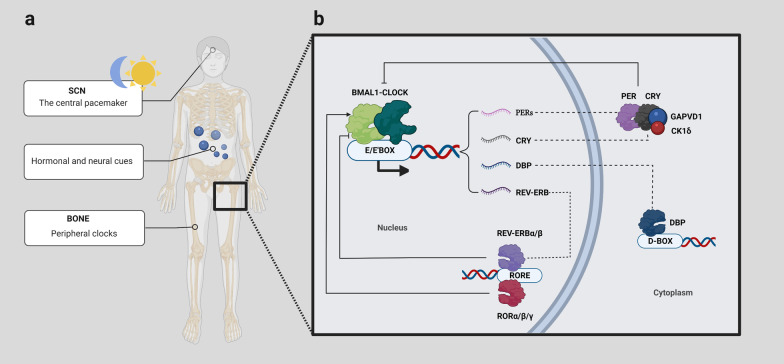Fig. 1.
a The circadian clock is distributed throughout the body. The retina perceives light information, which will be relayed to the SCN. In turn, the SCN entrains peripheral system clocks via neural, humoral, and metabolic cues [6]. b The multilevel transcription–translation feedback loop of circadian rhythm. The central loop is based on reciprocal regulation between the BMAL1-CLOCK complex and the PER complex. BMAL1 and CLOCK bind to E-boxes in the promoters of a subset of clock-controlled genes (CCGs) in a heterodimer form, promoting the expression of Per, Cry, Rev-erb, etc. Once PERs and CRY in the cytoplasm accumulate to a certain extent, they will enter the nucleus under GAPVD1 modulation and suppress the transcriptional activity of the BMAL1-CLOCK complex [7]. Casein kinases 1δ/ε phosphorylate PERs, which affects their nuclear translocation and stability [8]. In the second transcription loop, nuclear receptors RORα/β/γ and REV-ERBα/β compete for the ROR element of BMAL1 [9]

